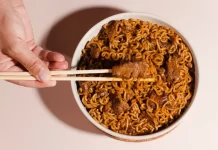Are you a passionate foodie with a dream of sharing your culinary creations with the world? Do you want to turn your love for food into a thriving online presence? If you answered yes, it’s time to embark on a delicious journey toward becoming a food blogger. With these easy and proven steps, you can do many things, including but not limited to launching your blog, establishing a unique brand identity, capturing stunning culinary creations, and many more. So put on your apron and prepare to become the next big thing in food blogging.
Table of Contents
Finding Your Niche
First, however, you need to do some legwork and learn a few things to let you move forward flawlessly. So:
- Consider your passions and expertise: Think about your culinary passions, your favorite cuisines, and your unique food-related skills. Consider what you love to cook and eat and what you are good at. By building a blog around something you are truly passionate about, you are more likely to create compelling content that engages your audience and keeps them coming back for more.
- Identify your target audience: Who are you writing for? Defining your readers will help you focus your content and create a more personalized experience for people. Consider factors such as age, location, and lifestyle when thinking about your targets. This will help you tailor your videos to their interests and needs.
- Research your competition: Look at other food blogs in your area and analyze their content, tone, and style. Identify what works well and what doesn’t, and consider how to differentiate yourself from the competition. Think about what unique angle you can bring to your niche that will set you apart from others in the field.
- Focus on a specific sub-niche: Instead of trying to be everything to everyone, consider focusing on a particular sub-niche within your main niche. For example, rather than creating a broad food blog, you could concentrate specifically on keto meal prep. By narrowing your focus, you’ll be able to establish yourself as an expert in that particular area and attract a more engaged audience.
Capturing Your Culinary Creations
Your food blog’s success relies heavily on stunning food photography and videography. But rest assured, as there are tools to help you deal with such an ordeal. Use VistaCreate’s wealthy video editing tools to trim video online, brightening it up and polishing it to a shimmering brilliance. Remember: you don’t need expensive equipment to capture fantastic images of your culinary creations. A basic understanding of digital photography techniques will go a long way. Here are life-saving tips:
- Use natural light whenever possible and invest in affordable lighting equipment if needed.
- Experiment with different angles, like overhead or low angles, to add interest and depth to your images.
- Use props and backdrops to create a unique style and convey the mood you’re trying to achieve.
- Consider the composition of your shots and use techniques like the rule of thirds or leading lines to guide the viewer’s eye.
- Don’t forget to edit your photos to bring out the best in your dishes, such as adjusting the brightness, contrast, and color saturation.

Securing a Mouthwatering Brand
- Brainstorm a catchy and memorable name: Your blog’s name is the first thing readers will see, so it’s critical to make it exclusive. Consider using puns, alliteration, or a play on words to make it stand out.
- Develop a unique tagline or slogan: A tagline or slogan can help convey the essence of your blog in just a few words. Think about what sets your page apart from others in your field and come up with a catchy phrase that captures your unique selling point.
- Create a visually appealing logo: Your logo should be eye-popping and reflective of your brand’s personality.
- Choose a color palette that reflects your brand: The colors you choose for your brand can significantly impact how readers perceive it. Try to use colors that evoke hunger, happiness, or warmth.
- Create an engaging About page: Your About page is a chance to introduce yourself and share your passion for food blogging. Make sure to include information about your background, your cooking philosophy, and any relevant credentials.
Crafting Compelling Content
The written content of your food blog is just as important as the multimedia elements. Your words have the power to inspire, educate, and entertain your readers, so it’s crucial to produce high-quality content that will tell people something exciting and fuel their enthusiasm about learning more.
Begin with creating a structure for each post that clearly explains the recipe process from start to finish, including tips and tricks that make your recipe unique. But don’t just stick to the recipe – focus on storytelling by adding personal anecdotes and utilizing descriptive language to draw readers in. Share your experiences and insights to make your texts relatable and authentic.

To make your publications gleam:
- Consider using specific techniques to elevate your writing.
- Use sensory words to engage your readers’ senses and make them feel like they’re right there in the kitchen with you.
- Incorporate humor and personality into your writing to make it more engaging and enjoyable to read.
- Use formatting techniques like subheadings, bullet points, and numbered lists to make your text more scannable and easy to read, and
- Always back up your claims with factual evidence and avoid making sweeping generalizations, which can come across as untrustworthy or even offensive.
Experiment
One of the most exciting aspects of food blogging is the opportunity to experiment with new flavors, ingredients, and cooking techniques. Don’t be afraid to try something new and take risks in the kitchen – this can lead to discovering unique recipes and creating original content for your blog. Experiment with different cuisines, fusion dishes, and unexpected flavor combinations. Share your results with your readers and encourage them to try it out themselves. You never know what might become your next signature dish or viral recipe. Remember, the food blogging world is always evolving, so continue to experiment to keep your blog fresh and interesting.
Conclusion
Congratulations! You’ve just taken the first step toward building a delectable food blog that will have readers salivating for more. By following these easy, proven steps, you’ll be well on your way to launching a successful online presence and creating a community of loyal foodies. Remember to keep experimenting and pushing yourself out of your comfort zone to continue growing your brand. So go ahead and let your culinary creativity run wild – your delicious journey is just beginning!








